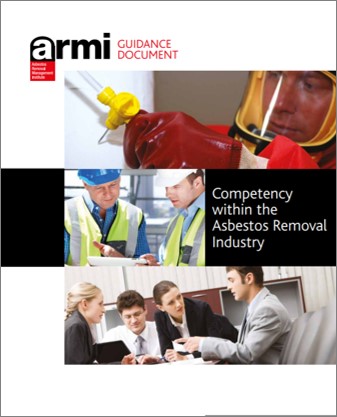19 November 2015
The Institute publishes Guidance on ‘Competency within the Asbestos Removal Industry’
Competency in licensed industry is vital for health & safety
The Asbestos Removal Management Institute (ARMI), the professional body for asbestos removal management professionals, has today published guidance on ‘Competency within the Asbestos Removal Industry,’ as endorsed by the Asbestos Liaison Group (ALG).
The aim of this document is to support all asbestos licence holders by providing guidance on how to produce an effective competency management system, including the use of Training Needs Analysis (TNA).
Competencies are the skills, abilities, knowledge and behaviours that lead to successful performance. In the licensed asbestos removal industry it is vital that individuals – operatives, supervisors and managers – have appropriate competencies to carry out their roles. Therefore asbestos licence holders need to be able to demonstrate the competency of their staff, so providing greater confidence that asbestos will be dealt with in a safe manner.
To support asbestos licence holders this new guidance describes a process of continuous performance management – a six-step cycle:
Establish roles > Agree performance standards > Collect evidence > Produce Training Needs Analysis (TNA) > Provide training > On-going assessment
This process will help asbestos licence holders achieve and maintain compliance with legal requirements. Also, having a defined set of competencies, related to performance standards for each role, demonstrates the standards of work that this organisation expects. This benefits the organisation, in terms of customer service and confidence, and the personal development of individual employees.
This guidance document also includes; competency tables defining key elements associated with core practical removal competencies, supervisory and management functions, and illustrative examples of how the guidance may be used by small and large organisations.
This guidance document is available as a free download
